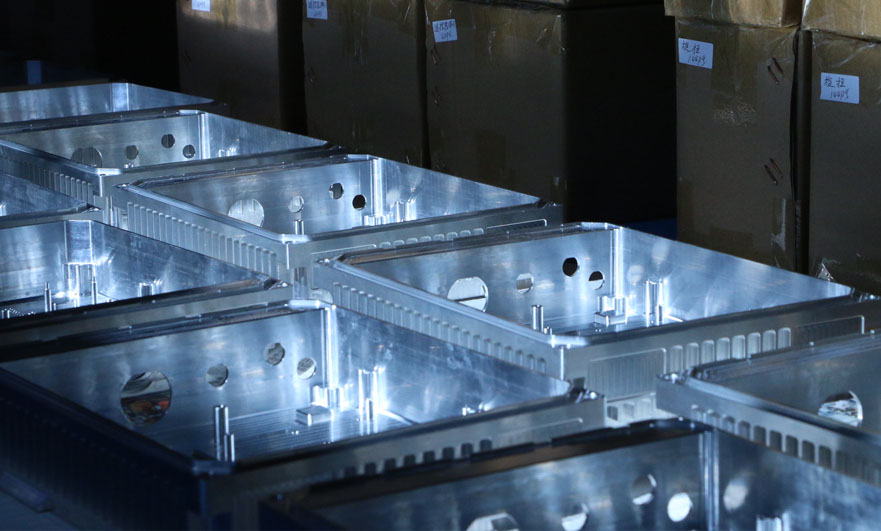15 years one-stop China custom CNC machining parts factory

Hey there I’m VMT Sam!
With 25 years of CNC machining experience we are committed to helping clients overcome 10000 complex part-processing challenges all to contribute to a better life through intelligent manufacturing. Contact us now
 136 |
Published by VMT at Dec 15 2021
136 |
Published by VMT at Dec 15 2021
Aluminum is one of the most commonly used machining materials, because most forms of materials have good machinability, so it is a commonly used material in manufacturing. Because of this, the competition in aluminum CNC machining will become more intense. Understanding the basics of tool selection and aluminum CNC machining technology with advanced operating parameters can help mechanics gain a competitive advantage.
Due to the special characteristics of aluminum, it is often unsatisfactory in terms of CNC machining efficiency, service life, and glossiness of parts. Therefore, how to choose the right tool and CNC machining process when machining aluminum in CNC has become a problem that everyone cares about.
Let us first understand the characteristics of CNC machining of aluminum and aluminum alloys: aluminum has low strength, low hardness, and high plasticity. It is suitable for plastic forming processing. However, it has a strong tendency to deform and strengthen during CNC machining, and it is easy to stick to the knife, and it is difficult to machine smoothly surface. The strength and hardness of aluminum alloy are much higher than that of pure aluminum, but compared with steel, the strength and hardness are lower, the cutting force is small, and the thermal conductivity is good. Parts made of this material can be found in almost every industry. In addition, aluminum has become a popular prototype product due to its low cost and flexibility.
Aluminum also has two basic forms: casting and forging. Forged aluminum is generally stronger and more expensive, and the alloy contains a lower proportion of external elements. Forged aluminum is also more heat-resistant than cast aluminum and has higher workability.

Cast aluminum has lower tensile strength, but higher flexibility. Its cost is lower, and the percentage of external elements (silicon, magnesium, etc.) is also higher. Among its alloys, it is harder to grind than forged ones.
Aluminum is one of the commonly used CNC machining metals, which can be CNC machined quickly and efficiently. Why do we encounter difficulties when machining aluminum CNC parts?
Because aluminum alloy is soft and plastic, it is easy to stick to the tool during cutting, forming a built-up edge on the tool, and welding may occur on the cutting edge during high-speed cutting, causing the tool to lose cutting ability, and affect the CNC machining accuracy and surface roughness Spend. In addition, the thermal expansion coefficient of aluminum alloy is large, and the heat of cutting easily causes zero thermal deformation in CNC machining, which reduces the accuracy of CNC machining.
Setting the correct parameters for aluminum applications is essential for optimizing productivity and obtaining better processing results. As aluminum is a material that is easy to be processed by CNC, it is essential to push the CNC machining machine to the limit, make full use of your tools, maintain a competitive advantage and maintain the victory of the business.
Cast aluminum alloy
Although there are many factors in the parameters of each job, there are also some factors. General guidelines follow when CNC machining aluminum. For cast aluminum alloys (ie 308, 356, 380), it is recommended to use the surface footage of 500~1000 SFM, and the RPM varies with the diameter of the tool. The basic calculation for finding the starting point of RPM is (3.82×SFM)/diameter.
Forged aluminum alloy
In wrought aluminum alloys (ie 2024, 6061, 7075), it is recommended to use the surface footage of 800-1500 SFM, and use the same calculation method to find the starting point of RPM.
Efficient CNC machining and milling
High-efficiency CNC milling is often referred to as HEM, and it is a strategy that has quickly become popular in manufacturing. Many CAM programs now include HEM tool paths. Although almost any machine can execute HEM, the CNC machining controller must have a fast processor to keep up with the additional lines of code. A great example of a high-efficiency milling cutter path in aluminum can be seen below.
The core is the use of low radial depth of cut (RDoC) and high axial depth of cut (ADOC) to make full use of the rough CNC machining technology of the cutting edge of the tool.
Ready To Start Your Next Project?
Get Instant Quote

Request a Free Quote
Send us a message if you have any questions or request a quote. We will get back to you ASAP!